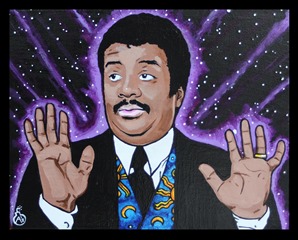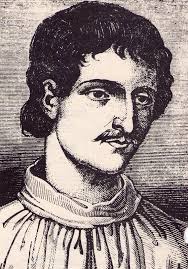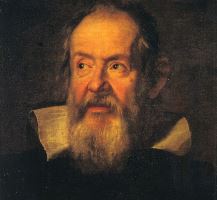THE THEOLOGICAL ENGINEER
Faithless Fairy Tales
Introduction
By Jeff Laird


Faithless Fairy Tales:
Introduction
Part 1: Galileo
Part 2: The Scopes Trial
Part 3: The Crusades
Part 4: The Spanish Inquisition
Introduction Single Page/Printer Friendly

This is the first in a series of articles examining how inaccurate, warped versions of real historical events are misused in order to attack Christianity. These Faithless Fairy Tales may satisfy "once upon a time" appetites, but they don't represent the truth. These are some of the more common anti-religious historical myths thrown at Christians, debunked by means of the actual storylines.
Mark Twain and G.K. Chesterton came to nearly identical opinions about the odd nature of truth: it's sometimes stranger than fiction, because fiction is purposefully made to fit our preferences. Unfortunately, that makes it easy to transplant fiction in place of fact, then use those fictions to justify the original preferences. This is particularly common with respect to history, where critics of religion have an insatiable appetite for fiction, often at the expense of truth. Snubbing easily discovered facts, some skeptics choose instead to deal in faithless fairy tales.
An almost too-perfect example of this occurred in the first episode of the new TV series Cosmos. The stylized depiction of Giordano Bruno was so slanted, so historically simplistic, and so blatantly misrepresented, that it became one of the more discussed points of that episode. Such a biased presentation doesn't add up as an effort to provide historical context…but it does make sense as deliberate attempt to slam religion. Cosmos portrayed Bruno as a humble philosopher, persecuted for his freethinking science. In reality, Bruno was a Dominican friar who caustically and overtly denied major theological doctrines of his own church.
History says Bruno was a polarizing figure on the wrong end of a deep theological dispute; Cosmos re-branded him as a martyr for the cause of science. This is hardly the first time Bruno's been used as such; a hallmark of these faithless fairy tales is in their constant re-telling, despite all evidence to the contrary. Accepting the pop culture caricature is like trusting the movie Braveheart as your reference point for the life of William Wallace.
Separating facts from fairy tales is important, because it's irrational to come to a negative view of anything in response to caricatures, rather than actual historical events. Among the most common faithless fairy tales I encounter are Galileo, the Crusades, the Spanish Inquisition, and the Scopes Monkey Trial. Historical information on these is not terribly difficult to find. Even a brief check of secular history shows the fairy tale version is simply untrue. Yet their mythical retellings persist. The next four articles in the series will each be devoted to one of these misguided myths.
For now, here are summaries of these skeptical tall tales, followed by a brief synopsis of their actual accounts. First off is Giordano Bruno, who, thanks to Cosmos, is sure to become a new favorite of the religious critic.
Note carefully, the point is certainly not to justify any of these historical events. Incidents like the Crusades and the Inquisition ought to be criticized, and then some, but only according to what actually happened, not a juiced-up tabloid version. Similarly, no particular attempt is being made here to paint Catholicism in a bad light; the fact that the Catholic Church figures in most of these incidents simply is what it is.
GIORDANO BRUNO

The Truth: Bruno was a Dominican friar, part of an order of intellectuals and philosophers within the Catholic Church. Bruno had a reputation for being obnoxious and contentious, and often had to relocate after grossly offending enough people. His choice of scientific positions was entirely based on his preference for a materialistic universe. Despite being part of the Dominican order, he routinely disputed core Catholic theologies, denigrated revealed religion, and advocated pantheism and various Egyptian spiritual concepts. After years of this, he was brought up on charges of heresy, for which he was executed.
A person might well object to the Catholic Church's handling of heretics, but the full truth makes it clear Bruno's theology, not his science, caused the conflict. His belief in multiple universes was motivated by philosophical preference, not empirical observations. And he was hardly a docile, humble person quietly pursuing knowledge. It was long years of blatant heresy and an insufferable attitude that led the Catholic Church to respond.
GALILEO

The Truth: Galileo spent nearly seven years discussing his models with Catholic scientists, who would not change their interpretation without empirical proof. Unfortunately, Galileo's model didn't perfectly match observations, something he acknowledged. After years of discussion, he was instructed not to teach Heliocentrism as fact, but was allowed to discuss it as a theory. More than 16 years later, a new Pope asked Galileo to write a book discussing the opposing views. The result was widely interpreted as an attack on the Pontiff. After this, Galileo was placed under house arrest and his writings banned, though he was able to continue his research. Galileo never wavered in his belief that the Bible was infallible and inerrant, seeing no contradiction between his work and scripture.
Again, one could easily vilify how the Catholic Church handled Galileo, but one can't reasonably say this was a conflict between science and religion. A major empirical hang-up was stellar parallax, a shift in observed position based on distance and movement. It would be nearly 200 years before we had instruments sensitive enough to actually observe this phenomenon. In other words, from a raw empirical standpoint, the Catholic Church was acting on the best available information. Hindsight is 20/20, of course, but their decision was far more the result of deliberation than dogma. Galileo's real troubles were political, not scientific.

Continue to Page Two
Image 1: Neil DeGrasse Tyson
Image 2: Giordano Bruno, 18th century engraving; Public Domain
Image 3: Galileo Galilei, 1636, by Justus Sustermans; Public Domain
comments powered by Disqus
Published 5-28-2014

